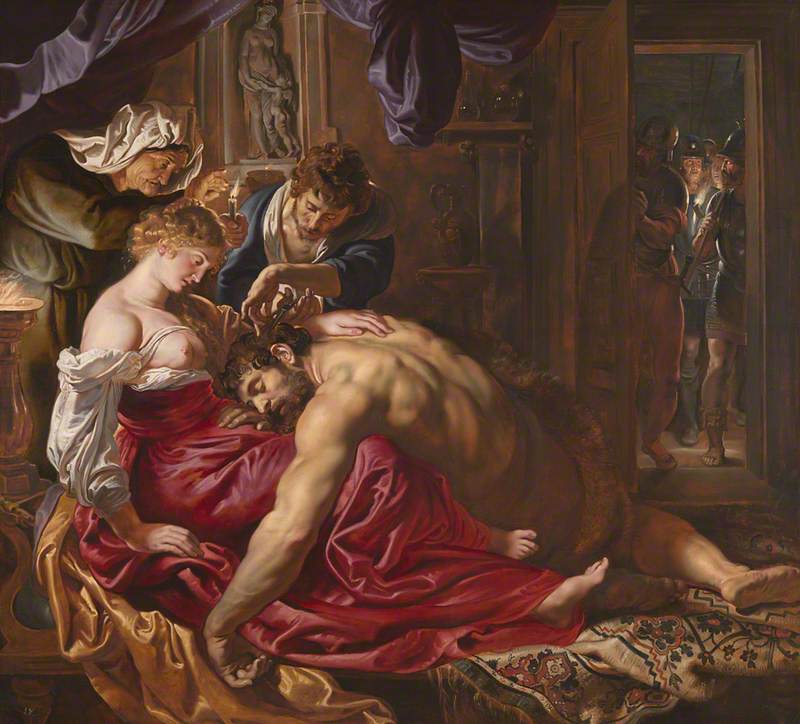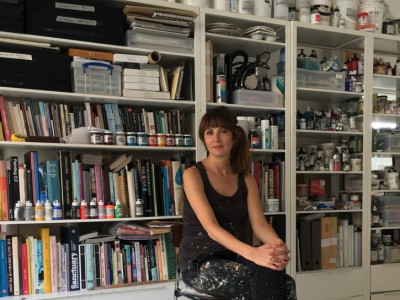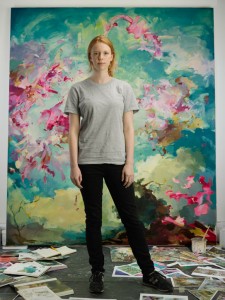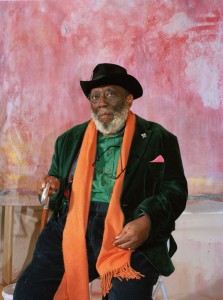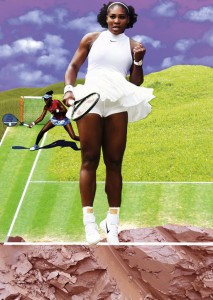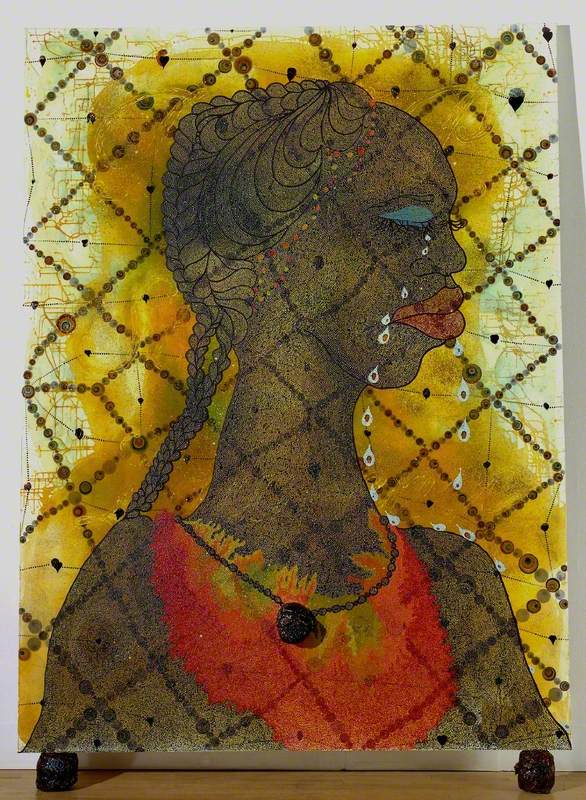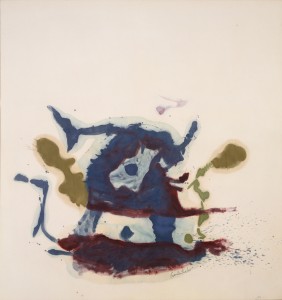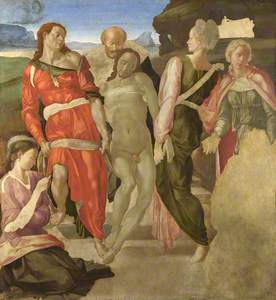The artist Tony Daley is perhaps not a name many people have heard of, yet he embodies the liveliness of British contemporary art.
Not long after he started his career in the 1990s, Daley began teaching art. Despite this, he doesn't really believe painting can be categorically taught. What artists can intuitively produce with paint is beyond instruction, and he maintains that bureaucracy has no place within the practice of art. Art is about freedom and pure expression, which should not be produced with rules or governance.
The artist spoke candidly to Hollie Douglas about the dissonance between pursuing a solo career and teaching art to others, concluding that, for him, perhaps the two cannot co-exist. As he explains, 'I don't see why anyone thinks painting is theoretical.'
Continue scrolling to read the full interview.
Tony Daley in his studio
Hollie Douglas: How did you first get into teaching?
Tony Daley: In the mid-1990s I looked around and thought I wasn't getting very rich. There was lots of stress and lots of competition. Everyone was fighting for these teaching jobs. If you earned 12 grand a year from it, then you were doing well. I only taught because I was practising hard. I really enjoyed it but it took up too much headspace and I wanted to be in the studio as much as I could afford to. But I do regret not teaching more now because it's a good discipline and a great way to live.
Hollie: How does someone teach art?
Tony: There's no such thing as an abstract teacher. It's nonsense, painting is painting. Whether someone draws a face or draws a square, it means nothing to me. But for some reason, I think it's the way figurative painters are taught, they have a mental image that they're painting properly.
Toney Daley's studio
Hollie: Do you think there is a right way and a wrong way to paint?
Tony: No. The way I see it is, one man's daubing is as good as any other. After that, if you can show it and sell it then that's a bonus.
For Daley, the teaching of art should be non-theoretical, and must encourage the direct action of painting. The success of former students such as Chris Ofili (who Daley claimed was his favourite and his best) can possibly be attributed to his teaching style.
As the artist explains, it's the importance of process and art-making that presides over everything, and one's ability to use colour as a creative medium. Although selling and showing can validate a work of art, the commercial market is only secondary and doesn't determine what is special about painting.
Hollie: What would you say inspires your artwork and how do you then go on to make a piece?
Tony: As a two-year-old, I had a mouth organ. I was very interested in the sounds produced from instruments. It was after the moon landing in 1969 that I really believed I could see the men on the moon, because in Jamaica you could see the moon in the day. It dawned on me that the world is made of colour and so was paint, and I could create a world with paint on paper.
Hollie: Although you are a contemporary painter, you unexpectedly delve deeply into the history of old painting styles and periods to fuel your process. Can you tell me about that?
Tony: I wanted to be Leonardo and Michelangelo as a child. Then, I became obsessed with Dutch and French paintings. Art school taught me to be more modern: German Bauhaus and so on. I don't think I have ever started painting without looking at an Old Master painting. I would take something as simple as the shape of the painting that could inspire me to make my own paintings. At war with myself over the history of art, the studio becomes a place where I will deal with those issues and then I might make another ten paintings to investigate.
Hollie: It seems to be a popular aspiration of many Caribbean-born artists to move towards the global centres: London or New York. What part does your Jamaican heritage play in your work?
Tony: It was the beauty and traces of the Jamaican landscape. After it rained you would go deep into the bushes and see the light shining through. Chasing the beauty and the magic as a child has never left me. I was desperate to get to England for education and I'd like to go back to see my family. I love what is going on across Europe and I always wanted to go to New York or London. The way the world works, there are racial groupings, but you have to chase the pinnacle of activity, and that's in the big cities.
One thing Daley has always been adamant about is his dislike of political art. As a young artist, he felt stifled by the pressure for him to always be featured in black art shows. He insists that his work has nothing to do with that but he is nevertheless encouraging about the position of black artists in the art market, due to huge demand for their work right now.
Hollie: I observed that your paintings seem to have no specific beginning, end, or fixed point, like the intangible nature of beauty you speak of. Sometimes your paintings have something identifiable, and maybe they represent a moment of consciousness within the painting that is actually unconscious. Would you agree?
Tony: [He nods emphatically] I chase after beauty, I have always been challenged by beauty. As you get older you realise it's infinite and unattainable, but I still pursue it. I find beauty in the odd discoveries that I'm painting. It's something that I find in Peter Paul Rubens, but also in his work I find it's always white people. I don't want to paint another white person, white lady, or white child. but I still want to capture the beauty in those paintings. The drive is the same, chasing after that internal truth or unconsciousness and responding to the beauty.
Hollie: How do you think COVID-19 will impact your work, or perhaps even your perception of beauty as translated within the work?
Tony: The first couple of weeks of lockdown I was okay to keep painting. But my mind would drift into a fear zone, it was like living in Blade Runner. The fear was starting to get to me. But after two weeks, I started staying home in the mornings and learning more about COVID-19 and coming in to paint during the afternoon. I am not a scientist, I'm not a doctor.
Do I think I'm trying to entertain or keep people happy? It's hard to sit here every day, and I think to myself: is painting enough?
As the interview with Tony concludes, I'm left with the realisation that the ability to create beauty is powerful, and is perhaps, one of the only things an artist can control in the current crisis. Against all odds, it might allow us to remain optimistic and prevail in the current situation.
Hollie Douglas, freelance writer




